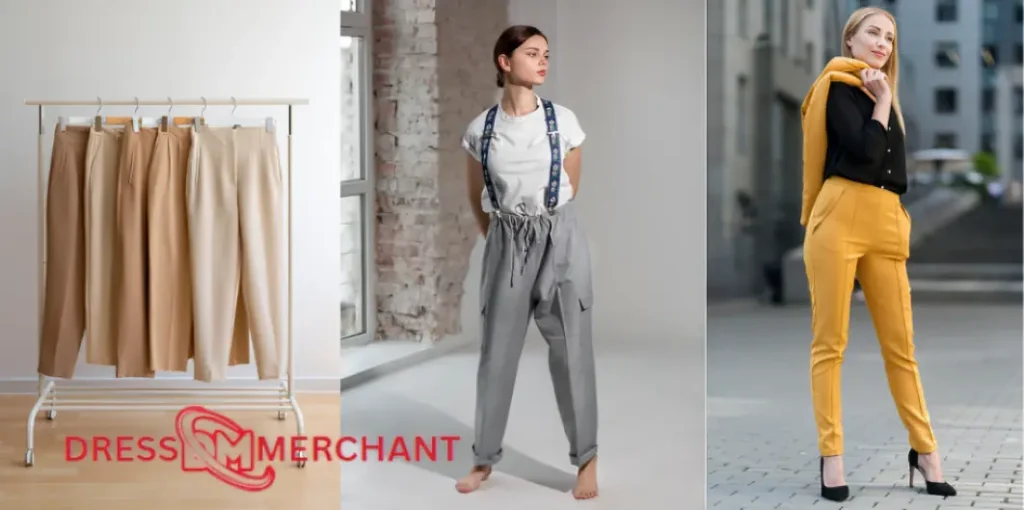Looking for an Affordable Trouser Manufacturer in Bangladesh? Our company offers high-quality trousers at competitive prices, catering to businesses and retailers worldwide. With years of expertise, we ensure excellent craftsmanship and durable fabrics. As a trusted supplier, we provide customized solutions to meet your specific needs. Partner with us for reliable, cost-effective, and stylish trousers that elevate your brand. Contact us today to get started!
Thank you for reading this post, don't forget to subscribe!
1. Overview of Trouser Manufacturing in Bangladesh
1.1 The Garment Industry’s Role in Bangladesh
Bangladesh’s garment industry is one of the world’s most influential and rapidly growing sectors, particularly in the global textile and apparel market. The country’s strategic position as a leading exporter of garments has propelled its economy forward, making it an essential player in the global manufacturing landscape.
Over the past four decades, Bangladesh’s garment industry has evolved from a small, localized sector into a significant contributor to its GDP, providing millions of jobs and generating substantial foreign exchange.
As the demand for trousers continues to rise across global markets, Bangladesh has become a go-to destination for affordable, high-quality garment manufacturing, especially for trousers, thanks to its competitive labor costs, skilled workforce, and adherence to international quality standards.
1.2 Types of Trousers Manufactured in Bangladesh
The variety of trousers manufactured in Bangladesh is vast and diverse, allowing the country to cater to different consumer preferences worldwide. The most common types of trousers manufactured here include:
- Casual Trousers: These trousers are designed for comfort and versatility, perfect for day-to-day wear. Made from cotton, polyester, and denim, they offer both durability and style. Whether in plain colors or fashionable prints, these trousers are suitable for various informal settings.
- Formal Trousers: Often crafted from high-quality fabrics such as wool, polyester blends, and linen, formal trousers produced in Bangladesh are popular in business settings and formal occasions. These trousers are designed to offer a sharp, professional look while maintaining comfort and style.
- Jeans and Denim Trousers: Bangladesh has established itself as one of the world’s leading producers of denim garments. Jeans and denim trousers from the country are renowned for their quality and craftsmanship. With advanced denim technology and innovative designs, these garments are globally sought after.
- Chinos and Khakis: Light and comfortable, chinos and khakis are perfect for semi-formal and casual wear. Made from cotton or cotton-blended fabrics, these trousers are versatile and ideal for year-round wear. They have a classic appeal that suits a wide range of consumers, from young professionals to casual dressers.
1.3 Key Manufacturers of Trousers in Bangladesh
Bangladesh is home to several major manufacturers that have earned international recognition for producing high-quality trousers. Some of the most notable include:
- Dress Merchant Ltd.: A leading garment manufacturer specializing in trousers and other apparel. With cutting-edge technology and a focus on quality, Dress Merchant Ltd. caters to several global markets.
- Ha-Meem Group: Known for its extensive product portfolio, Ha-Meem Group is a prominent player in the Bangladesh garment sector, with trousers being one of its key offerings. The company is recognized for its commitment to sustainability and advanced manufacturing processes.
- Beximco Textiles: A well-established name in the Bangladeshi garment industry, Beximco Textiles produces a wide range of trousers, focusing on high-end and export-quality apparel. The company has a strong reputation for its meticulous attention to detail and innovative designs.
- Viyellatex Group: This company is a key manufacturer in Bangladesh’s garment sector, with expertise in producing a wide variety of trousers, from casual to formal styles. Viyellatex is committed to sustainability and follows the highest standards of production quality.
These manufacturers invest heavily in state-of-the-art machinery, employ skilled labor, and adhere to rigorous quality control procedures, ensuring that the trousers produced meet the highest international standards.
With strong production capabilities and a focus on meeting the global demand, Bangladesh remains one of the most competitive countries in the trouser manufacturing industry.
2. Why Choose Bangladesh for Affordable Trouser Manufacturing?
2.1 Cost-Effectiveness of Production
Bangladesh has long been recognized as a hub for affordable garment production, particularly in trousers manufacturing. One of the key factors contributing to its cost-effectiveness is the relatively low labor costs compared to other major garment-producing countries.
This significantly reduces the overall production costs, making it an attractive option for businesses looking to produce high-quality trousers at competitive prices. Furthermore, local textile mills in Bangladesh benefit from economies of scale, allowing for bulk production at reduced rates, which also helps maintain the affordability of finished products.
The country’s favorable policies, including tax incentives and favorable trade agreements, further enhance its appeal as a cost-efficient manufacturing destination.
2.2 Skilled Workforce and Expertise
A major strength of Bangladesh’s garment industry is its skilled and experienced workforce. With decades of expertise in textile and apparel manufacturing, Bangladesh has cultivated a large pool of skilled workers proficient in sewing, finishing, and quality control.
These workers have undergone extensive training and often specialize in specific garment types, such as trousers, ensuring a high level of craftsmanship and attention to detail.
Moreover, the workforce is highly adaptable, staying updated on the latest fashion trends and production techniques. This enables the production of trousers that not only meet international standards but also align with global fashion trends, making Bangladesh a highly sought-after destination for manufacturing trendy and high-quality garments.
2.3 Availability of High-Quality Raw Materials
Another compelling reason to choose Bangladesh for trousers manufacturing is the easy access to high-quality raw materials. The country has a well-established network of local suppliers who provide a wide variety of fabrics essential for trousers, including cotton, denim, polyester blends, and wool.
Bangladesh’s textile industry is self-sufficient, with numerous fabric mills that specialize in producing high-quality materials tailored for garment production. This reduces dependency on imports and allows for more affordable production costs.
With the availability of high-quality raw materials, manufacturers can create durable, comfortable, and stylish trousers that meet the expectations of customers worldwide.
2.4 Efficient Supply Chain and Logistics
Bangladesh’s garment manufacturing sector benefits from an efficient and well-organized supply chain, which ensures that raw materials are sourced promptly and that finished products reach global markets without delay.
The country is strategically located with easy access to international shipping routes through major seaports like the Port of Chittagong, which acts as a gateway for global exports. Additionally, the ongoing development of infrastructure, such as roads, highways, and airports, ensures smoother logistics operations.
This network of logistics services ensures timely deliveries, further adding to the cost-effectiveness and reliability of sourcing trousers from Bangladesh.
3. The Manufacturing Process of Trousers in Bangladesh
3.1 Sourcing Raw Materials
The production of high-quality trousers begins with the sourcing of raw materials. Fabrics such as cotton, polyester, linen, and denim are selected based on the desired type of trousers to be produced. Local suppliers, as well as international suppliers, provide these materials to Bangladeshi manufacturers.
The variety of fabrics ensures that manufacturers can cater to a wide range of customer preferences, from high-end tailored trousers to budget-friendly casual options.
Bangladesh has become a hub for garment production due to its access to cost-effective raw materials, skilled labor, and efficient supply chains. These materials are tested for durability, color fastness, and texture to ensure they meet global standards.
3.2 Design and Pattern Making
Before production begins, designers work on the design and patterns of the trousers. This stage involves creating drafts and mock-ups of the trouser styles, including detailing like pockets, waistbands, zippers, and stitching.
Advanced computer-aided design (CAD) systems are used to ensure precision and consistency in the patterns. The CAD systems allow for intricate detailing that is crucial for achieving the perfect fit and design. Furthermore, designers take into account current fashion trends and market demands, ensuring that the final product appeals to a wide audience.
This phase also includes deciding on elements like pleats, cuffs, and the type of stitching, which all contribute to the overall aesthetic and comfort of the trousers.
3.3 Cutting and Stitching
Once the patterns are ready, the fabric is cut into the required pieces using automated cutting machines or manual methods, depending on the complexity of the design. Skilled workers then stitch the pieces together using industrial sewing machines. The stitching process ensures that the trousers are durable, with proper alignment of seams and hems.
The quality of stitching is key to ensuring that the trousers last for a long time and retain their shape after multiple washes. Advanced sewing techniques such as double stitching, reinforced hems, and overlocking are used to prevent fraying and increase the garment’s lifespan.
The workers involved are highly trained to handle various types of fabrics and ensure consistency in stitching quality.
3.4 Finishing and Quality Control
After stitching, trousers undergo a finishing process that includes adding buttons, zippers, and tags. They are then ironed and inspected for any defects. Quality control is a crucial step, as manufacturers in Bangladesh adhere to international quality standards, ensuring that every pair of trousers meets the required specifications.
During the quality control phase, each pair is checked for stitching errors, fabric defects, and color inconsistencies. Trousers that do not meet the required standards are either sent for rework or discarded. This step also involves making sure that any special requests, such as custom branding or labels, are correctly implemented.
3.5 Packaging and Shipping
Once the trousers are fully manufactured and inspected, they are neatly packed and prepared for shipping. The packaging process ensures that the trousers are protected from damage during transportation.
With efficient logistics and shipping services, manufacturers in Bangladesh can deliver trousers to global markets within short lead times. Trousers are typically packed in bulk for shipment or individually for retail.
Specialized packaging methods are used to minimize creases and ensure that the trousers remain in excellent condition until they reach the customer. The shipping process also involves the proper labeling and documentation for international trade, ensuring compliance with customs regulations and delivering products in a timely manner.
4. Benefits of Sourcing Affordable Trousers from Bangladesh
4.1 Cost-Effective Pricing
One of the most significant advantages of sourcing trousers from Bangladesh is the cost-effectiveness. The country’s garment industry is known for providing affordable manufacturing solutions without compromising on quality.
Bangladesh has a long-standing reputation for offering some of the lowest production costs in the global garment market. This is primarily due to lower labor costs compared to other manufacturing hubs, coupled with tax incentives provided by the government to export-oriented industries. As a result, businesses can secure high-quality trousers at highly competitive prices, which ultimately allows them to achieve better profit margins.
The cost-effectiveness of sourcing from Bangladesh has made it an attractive option for both small and large brands seeking to minimize their operational expenses while maintaining product standards.
4.2 High-Quality Production
Despite the affordability, manufacturers in Bangladesh do not compromise on the quality of their trousers. In fact, Bangladesh is recognized for its impressive ability to combine affordability with premium production standards.
The country’s garment factories are equipped with state-of-the-art machinery and technology, ensuring high levels of precision in manufacturing. Additionally, the workforce in Bangladesh is highly skilled, with many workers trained in the latest techniques in garment production.
This results in trousers that not only meet but often exceed global standards. By sourcing from Bangladesh, businesses can be assured that they are offering high-quality products to their customers, enhancing their reputation in the market while benefiting from the cost advantages.
4.3 Flexibility in Order Quantities
Bangladesh’s garment industry is also known for its flexibility in handling various order volumes. Whether a business requires bulk orders for mass distribution or smaller, customized batches for exclusive collections, manufacturers in Bangladesh can accommodate both. This flexibility is a key advantage for businesses looking to adjust their production schedules based on seasonal demand or specific market trends.
Moreover, Bangladeshi manufacturers are well-equipped to handle custom designs, fabric choices, and unique specifications, providing businesses with the opportunity to create distinct and high-quality trouser styles.
This adaptability makes Bangladesh an ideal sourcing destination for companies of all sizes and needs, from startups to established global brands.
4.4 Quick Turnaround Time
Bangladesh’s garment sector is also renowned for its quick turnaround times. With a combination of an efficient infrastructure, streamlined production processes, and well-established supply chains, Bangladeshi manufacturers can deliver trousers at a faster pace than many of their competitors.
This ability to produce and ship garments swiftly allows businesses to meet tight deadlines, respond to fast-moving fashion trends, and minimize inventory costs. Additionally, this quick turnaround can be particularly beneficial for businesses operating in markets with rapidly changing demands.
As a result, companies that source trousers from Bangladesh can maintain a competitive edge by staying ahead of the market and ensuring that their products are available to consumers when they need them.
5. Challenges in Trouser Manufacturing in Bangladesh
5.1 Labor-Related Issues
Bangladesh’s manufacturing sector is highly dependent on its large and skilled workforce. However, labor-related challenges continue to impact the industry, especially in the garment sector, which includes trouser manufacturing.
Issues such as strikes, wage disputes, and concerns related to worker safety can lead to occasional production disruptions. Strikes, often triggered by demands for better wages or working conditions, can cause delays in meeting production targets. Additionally, the working environment in some factories may not always meet the ideal safety standards, leading to concerns regarding employee well-being and factory safety.
These challenges, however, are not being ignored. The government, alongside private industry stakeholders, has made significant strides in addressing these labor issues.
Efforts are focused on enhancing workplace safety, providing better wages, and ensuring labor rights. Initiatives like establishing worker welfare boards, upgrading factory infrastructures, and offering training programs for workers are contributing to resolving these issues.
Although the road to perfecting labor conditions remains long, there has been measurable progress toward creating a more stable and secure work environment.
5.2 Compliance with International Standards
As global demand for higher environmental and ethical standards grows, manufacturers in Bangladesh must continuously adapt to meet international expectations. Compliance with global standards on labor rights, environmental sustainability, and product safety is paramount for remaining competitive in the global market.
Brands and retailers are increasingly seeking suppliers who adhere to social and environmental regulations, such as ISO certifications and those related to fair labor practices (e.g., SA8000).
To remain a preferred partner in international trade, Bangladeshi trouser manufacturers must embrace these standards and demonstrate their commitment to sustainable and ethical production.
In response, many companies in Bangladesh have begun to invest in sustainable practices, such as reducing water consumption, managing waste, and minimizing environmental pollution.
Additionally, factory audits and certifications are becoming commonplace, ensuring that manufacturers meet the necessary benchmarks. These compliance efforts not only improve the working conditions but also enhance the overall reputation of the Bangladeshi garment sector.
5.3 Competition from Other Low-Cost Markets
Bangladesh’s position as a global leader in low-cost garment manufacturing, including trousers, has faced increasing competition from other low-cost countries such as Vietnam, India, and Cambodia.
These countries, often with lower production costs or improved labor practices, pose a challenge to Bangladesh’s dominance. As international brands look to diversify their supply chains, they increasingly consider these alternative markets.
Nevertheless, Bangladesh retains its edge due to several critical factors. The country’s vast labor force, skilled workforce, and strong manufacturing infrastructure allow it to offer competitive prices without sacrificing quality.
Additionally, the close proximity of Bangladesh to major textile suppliers, efficient port facilities, and government incentives for the garment sector provide an advantage.
To further strengthen its position, Bangladesh continues to focus on enhancing product quality, incorporating advanced manufacturing technologies, and improving efficiency through innovation.
While competition remains fierce, the country’s ability to balance cost-effectiveness with quality production ensures it remains a leading player in the global garment manufacturing market.
6. How to Choose the Right Trouser Manufacturer in Bangladesh
Selecting the right trouser manufacturer in Bangladesh is a crucial decision that can significantly impact the quality and efficiency of your garment production process. Here are some important factors to consider when choosing the right manufacturer:
6.1 Assessing Manufacturer Reputation
Before partnering with a manufacturer in Bangladesh, it is essential to assess their reputation in the industry. Reputation often speaks volumes about a company’s reliability and consistency.
Look for manufacturers with a proven track record of delivering high-quality products on time and who are known for their ethical manufacturing practices. Online reviews, testimonials from other businesses, and word-of-mouth recommendations can provide valuable insights.
Additionally, you can request references from previous clients to get a better understanding of the manufacturer’s professionalism and ability to meet deadlines. A reputable manufacturer will be transparent about their operations, certifications, and compliance with international labor and environmental standards.
6.2 Evaluating Product Quality
The quality of the trousers you produce will directly influence your brand image, customer satisfaction, and repeat business. It is therefore crucial to ensure that the manufacturer adheres to strict quality control measures. To evaluate their standards, request samples of trousers they have produced in the past.
Pay close attention to the fabric quality, stitching, fit, and overall craftsmanship. Check for consistent color, pattern accuracy, and precise measurements, as any defects could impact the final product.
Additionally, inquire about the manufacturer’s quality assurance processes to understand how they handle issues such as fabric defects or inconsistencies during production. This helps ensure that you only receive top-tier products that meet your brand’s expectations.
6.3 Understanding the Manufacturer’s Capabilities
A manufacturer’s capabilities play an important role in determining whether they are a good fit for your business. Understanding their capacity in terms of design flexibility, production volume, and turnaround time is key. If you require a large quantity of standard trousers, ensure that the manufacturer can handle large-scale production efficiently.
On the other hand, if you need smaller batches or customized designs, make sure the manufacturer is flexible and capable of fulfilling such orders without compromising on quality.
In addition to production capabilities, it’s essential to confirm their ability to deliver products within the agreed timelines to avoid any delays in your supply chain. Clear communication about your needs and their capabilities will ensure a smooth manufacturing process.
7. Future of Trouser Manufacturing in Bangladesh
The future of trouser manufacturing in Bangladesh appears robust and dynamic. With continued advancements in fashion trends, technology, and sustainability, Bangladesh is on track to remain a global leader in this industry.
7.1 Trends in Trouser Fashion
The evolving preferences of consumers are significantly shaping the future of trouser manufacturing. As global fashion trends shift towards comfort, versatility, and style, Bangladesh is well-positioned to meet these demands. Designers and consumers alike are increasingly gravitating towards trousers made from sustainable, high-performance fabrics.
Organic cotton, recycled polyester, and other eco-friendly materials are now more than just a niche choice—they are becoming mainstream in the industry. This aligns with the rising demand for environmentally responsible fashion.
Additionally, innovative patterns and hybrid fabrics designed to provide a better fit and functionality are gaining traction. Bangladeshi manufacturers are responding to these trends by incorporating these materials into their production lines, ensuring they meet international fashion standards while also meeting the needs of eco-conscious consumers.
7.2 Increasing Investment in Technology
Technological investments are transforming the landscape of trouser manufacturing in Bangladesh. Automation is becoming a key player in improving production efficiency.
Manufacturers are increasingly adopting advanced technologies like automated sewing machines, 3D printing for precise pattern making, and AI-driven production systems that help in forecasting demand, optimizing processes, and minimizing wastage.
These technologies not only boost efficiency but also elevate the quality of the trousers produced. Furthermore, they enable manufacturers to cater to more complex designs and customizations, which have become increasingly popular in both the domestic and international markets. With this focus on innovation, Bangladesh can maintain its competitive edge in the global garment industry and respond quickly to shifting trends.
7.3 Expansion of Sustainable Manufacturing Practices
As sustainability becomes a critical factor in the global fashion industry, Bangladesh is making significant strides toward more sustainable manufacturing processes. Many companies are investing in technologies that reduce their carbon footprint, such as energy-efficient machines and renewable energy sources.
The adoption of eco-friendly dyes, the reduction of water consumption, and the implementation of circular manufacturing models are all part of this shift.
As consumers continue to prioritize ethical and environmentally-friendly practices, manufacturers in Bangladesh are ensuring they meet these expectations, paving the way for a future that combines fashion with responsibility. With these initiatives, Bangladesh’s trouser manufacturing industry is poised for long-term success in the sustainable fashion era.
8. Conclusion: Affordable Trouser Manufacturer in Bangladesh
Bangladesh has firmly established itself as a leading manufacturer of affordable trousers, offering high-quality products at competitive prices. The country’s skilled workforce, advanced manufacturing processes, and cost-effective production capabilities make it an ideal sourcing destination for businesses in need of high-quality trousers.
By understanding the benefits, challenges, and processes involved in sourcing trousers from Bangladesh, businesses can make informed decisions that will enhance their product offerings while maintaining affordability and quality.
Sourcing trousers from Bangladesh not only supports a robust garment industry but also contributes to the growth of global fashion trends, sustainable practices, and ethical manufacturing standards. Whether you’re a retailer, brand owner, or wholesaler, Bangladesh remains a top destination for affordable and high-quality trouser manufacturing.













